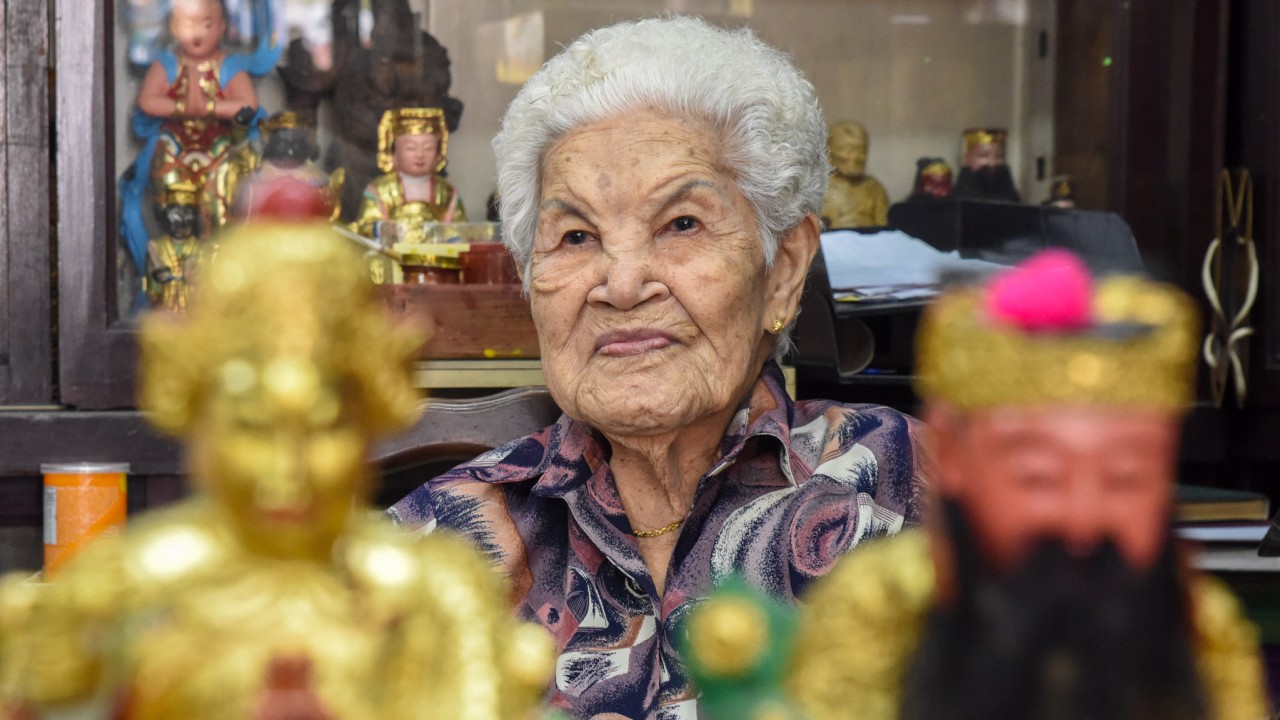Our Grandmothers’ Gardens
2022 - Film & Video (Film & Video)
8:45 minutes
Olga Grotova
Our Grandmothers’ Gardens by Olga Grotova is based on the history of Soviet allotment gardens, which were small plots of land distributed amongst the families of factory workers to compensate for poor food supply in a country that was over-producing weapons. Beginning in the 1960s, Grotova’s great grandmother and grandmother tended an allotment garden for three decades, after their release from an all-female gulag camp for “enemies of the people”. These camps detained wives, sisters, mothers, and daughters of men executed during Stalinist repressions. The detainees were often subjected to rape and violence—a horrific chapter in Soviet history that is persistently covered up by the Russian state. The family’s garden was set up with the help of other former inmates of the gulag camp and became a site where trauma could be processed through engagement with the earth. In 2021, Grotova and her mother Tatiana traveled back to the Urals to find the garden. On their journey they visited communities wrecked by deindustrialization and extreme pollution, and met women who still garden to regain autonomy from the state. Our Grandmothers’ Gardens presents an installation of photograms made using an intricate process developed by the artist which layers the traces of plants, debris, and women’s belongings found in the gardens with drawings, soils, and pigments. Grotova’s process of layering, erasing, and rearranging is connected to her grandmothers’ daily labor of digging and planting; acts that aided in processing their trauma. By employing the camera-less (and less precise) technique of the photogram, Grotova transfers agency to the plants and objects that are intertwined with the lives of the women who tended the gardens. The installation is juxtaposed with highly constructed propaganda images from Soviet magazines such as Peasant Woman and Gardening from the 1950s-1960s. The work critiques the state-commissioned photographs of women for their connection with Soviet colonization and oppression, notably in the Soviet republics that have been drained of resources and harvests for the benefit of the Russian state. The photograms give voice to the debris and the discarded, much like the women’s voices drowned out by patriarchal structures.
Olga Grotova is an artist and poet whose practice involves collecting and mapping stories of Soviet and Eastern-European women that have been erased from established historical narratives. Grotova undertakes research journeys to discover the lost histories of communities and families from former Soviet states in order to dispel male-dominated and power-centric ‘official’ narratives. Her practice is a feminist interruption of the Russian political narrative plagued by extraction, patriarchy, and imperialism. Centering erased narratives about women undermines political regimes built on terror, misogyny, and militarization. By uncovering women’s histories and questioning the homogenized state-backed narrative, Grotova’s work creates potential for larger explorations of resistance to global ecological catastrophe, colonization, and totalitarianism.
Colors:
Related works sharing similar palette

© » KADIST
Gregory Halpern
2016Gregory Halpern spent five years shooting ZZYZX , and another year editing the results, from an estimated thousand rolls of film, about half of which were shot in the final year after his Guggenheim Fellowship enabled him to live in California...

© » KADIST
Eric Dizambourg
2010Like the film Le Mouton noir, this dimension is counterbalanced by a burlesque element...

© » KADIST
Tony Oursler
2012Continuing Oursler’s broader exploration of the moving image, Absentia is one of three micro-scale installations that incorporate small objects and tiny video projections within a miniature active proscenium...

© » KADIST
Lucas Blalock
2011Compositions such as Tree on Keystone (2011) become hyperreal versions of their real-world equivalents...

© » SOUTH CHINA MORNING POST
She made gods for 70 years: meet the matriarch of Singapore’s last handcrafted Taoist deity producer | South China Morning Post Advertisement Advertisement Asia travel + FOLLOW Get more with my NEWS A personalised news feed of stories that matter to you Learn more Tan Chwee Lian is the matriarch behind Say Tian Hng, Singapore’s last Taoist idol business...

© » KADIST
Orion Shepherd
2010Ballad of the Unabomber Part I is a painting by Orion Shepherd that features several manila folders stacked in order according to their size, resting atop a grainy hardwood pattern...

© » ARTS EQUATOR
Pandemic in the Philippines: A cultural sector on its own | ArtsEquator Thinking and Talking about Arts and Culture in Southeast Asia Articles August 17, 2020 By Katrina Stuart Santiago (2,200 words, 8-minute read) When I was first asked to write about “cultural leadership” in the Philippines, I turned up a blank...

© » KADIST
Vandy Rattana
2009Vandy Rattana’s Bomb Ponds series was made following a transformative encounter with the craters left over from 2,756,941 tons of bombs dropped by U...

© » KADIST
Young Min Moon
2022Young Min Moon’s recent paintings repetitively portray the rituals bound up in the Korean tradition of Jesa ...











